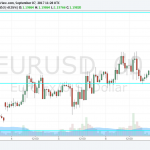Currently, stock markets are flying high, courtesy of a favorable GDP growth rate, rising disposable income, an improving labor market with unemployment rate at a 16-year low, rise in economic activity post hurricanes and a low inflation rate. All these have considerably boosted consumer sentiment, which hit a 17-year high in November.
Since the market is on an upward trajectory, investing in risky stocks will yield huge returns. However, one cannot ignore the various micro and macro factors that can lead to volatility when they come into play.
Uncertainties That May Loom Large
Market expectations for tax reform have increased as the GOP tax bill passed the Senate Budget Committee on a party-line vote. Though chances of the bill being passed by the full Senate have increased considerably, a failure in this regard could make the S&P 500 slip.
Again, the Fed has started reducing its balance. It’s worth noting that this event has had an adverse impact in the past. KM Partners data shows that five out of six times the Fed has made efforts to reduce its balance sheet, it has resulted in a recession. So, this sentiment can lead to market volatility going forward especially if the Fed takes up a hawkish approach. As of now, the Fed is taking it easy and therefore chances of market disruption are low.
Further, heightened tensions between the United States and North Korea can also cause stocks to fall. Though a full-fledged war is unlikely, investors will surely prefer to move out of high risk stocks.
Invest in Low-Beta Stocks
In this scenario, it will be wise to add some safe bets to your portfolio. Such a portfolio can be easily created based on the low beta strategy, which selects stocks less prone to risks than the market.
Beta, also known as the beta coefficient, measures the volatility of a stock against broader markets. It measures the extent to which a stock’s return may be affected or its price fluctuates owing to market conditions. Stocks with a beta ranging from 0 to 1 mainly show less volatility than the broader markets.












Leave A Comment